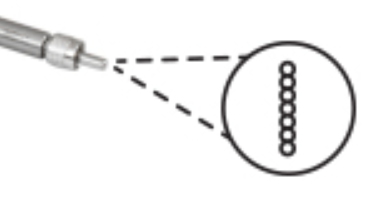Hi Astghik,
One issue with modeling fiber output is that the angular distribution of the output can depend on the stimulus at the fiber input. However, I have used several methods for approximating fiber output:
1) The Source Ellipse in the Source Distance mode. Here the source aperture is filled with rays such that all the rays appear to emanate from a point. We can calculate the source distance as the semidiameter / Tan[halfAngle]. This is reasonable in the far field, but in the near field or for imaging applications the fact that the fiber output appears as a point source is a strong disadvantage.
2) The Source Ellipse with a Gaussian specification. The Intensity as a function of direction cosines is given by I = I0 Exp[-Gx l^2 - Gy m^2]. If Gx = Gy then the distribution is radially symmetric since l^2+m^2 = (1 - n^2). We can, for example, calculate Gx = Gy = G such than at angle theta the intensity falls to 1/E^2 from G (l^2+m^2) = 2, where l^2+m^2 = (1-n^2) and n^2 = Cos^2[theta].
3) We can also use Source Radial, with intensity vs. angle entries to produce an arbitrary radially symmetric distribution.
I like #2 best.
I've attached a ZAR file with examples of these three methods for a 200um fiber with an NA .22, 12.7 degree half angle output.
Kind regards,
David




